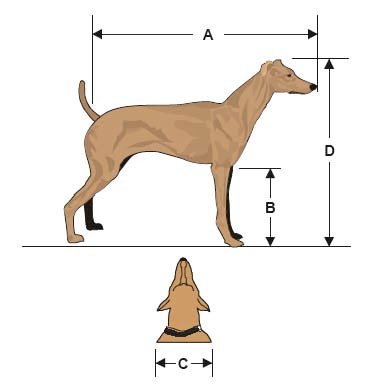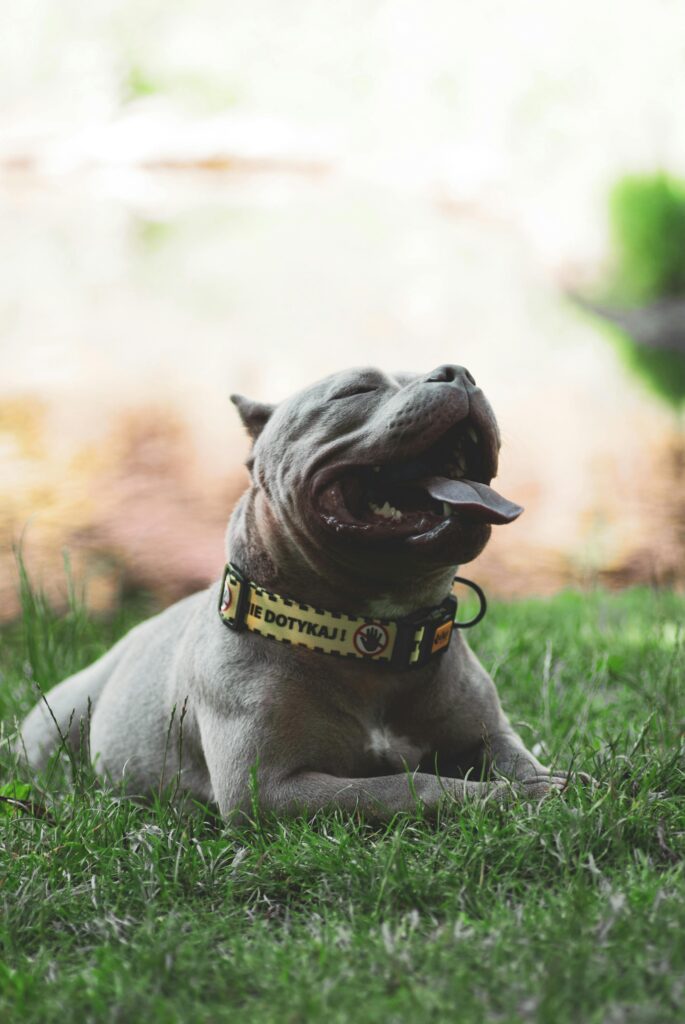
HOW TO MEASURE
Measuring your dog for the right kennel size is one of the first important decisions you can make when relocating your dog. If you don’t choose correctly, the airlines can (and will) refuse to send them.
So, how do I know what is the right size kennels for my pet?” A great start is to use the image at the left with the following legend.
A = Length of animal from nose to root of tail.
B = Height from ground to elbow joint.
C = Width across shoulders.
D = Height of animal in a natural standing position from the top of the head. It is also helpful to get the measurement to the ear tip.
We recommend that you give it an inch to an a inch and a half bigger so that it gives the pets some room to move in and also then there shouldn’t be any problems at the airport. The official rules require 3 inches from the top of your dog’s head to the top of the kennel. The airlines have become increasingly insistent on this rule so try to find a kennel with sufficient head space. A great way to be certain of the right size would be to take your pet into PetSmart or Petco and try out a few kennels .
MINIMUM SIZE
Our 20 years of shipping pets has taught us that the minimum size you should purchase is the “medium” size kennel which is 28 x 20 x 21. Of course smaller dogs and cats will fit in smaller kennels that this and have the 3 inches of headroom required, however we have found the airlines may still reject them and we strongly recommend getting at least the medium size.
HOW TO CHOOSE THE RIGHT AIRLINE APPROVED KENNEL
We have a quick article on how you can make sure the airlines won’t reject your kennel HERE:



